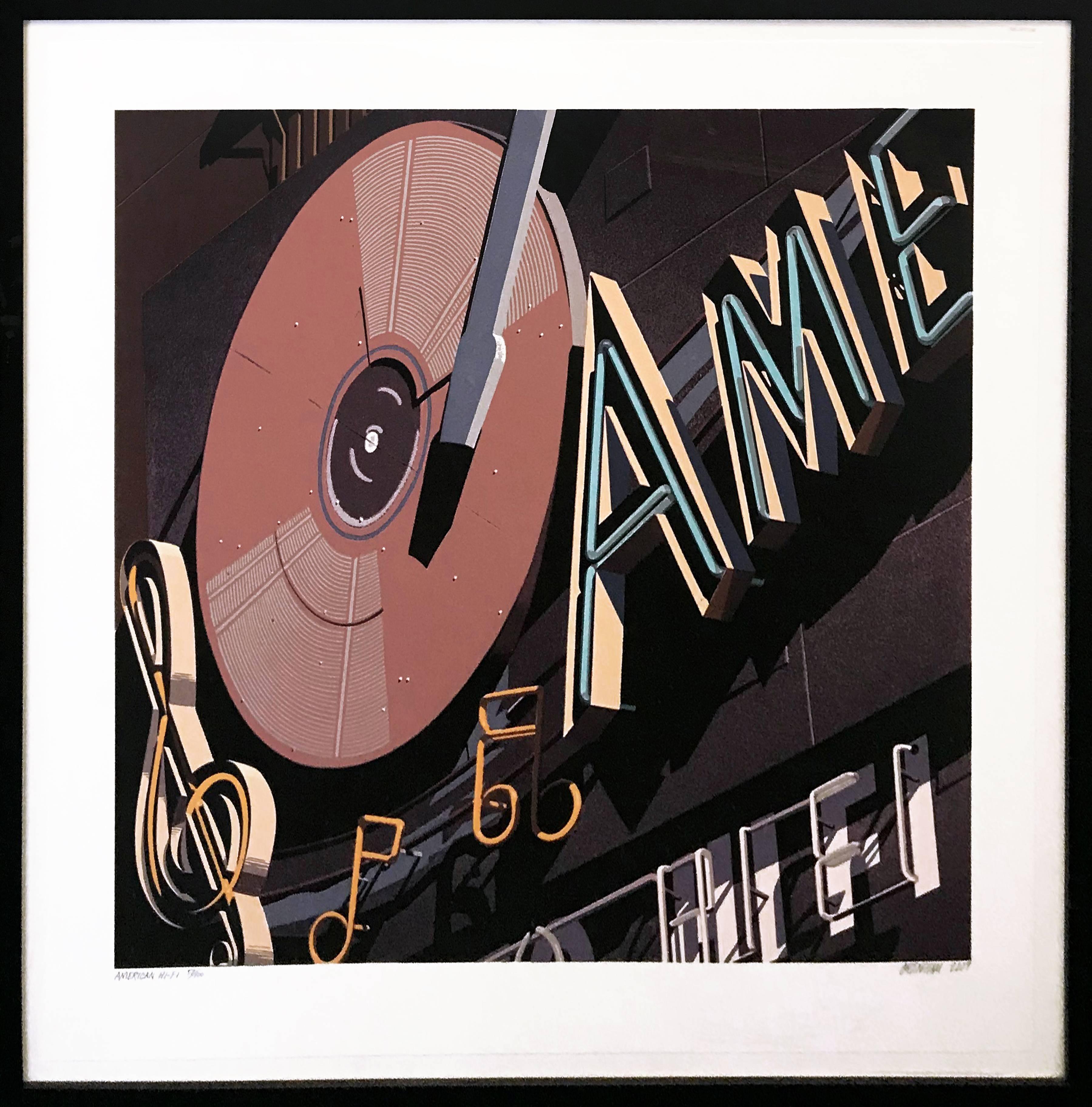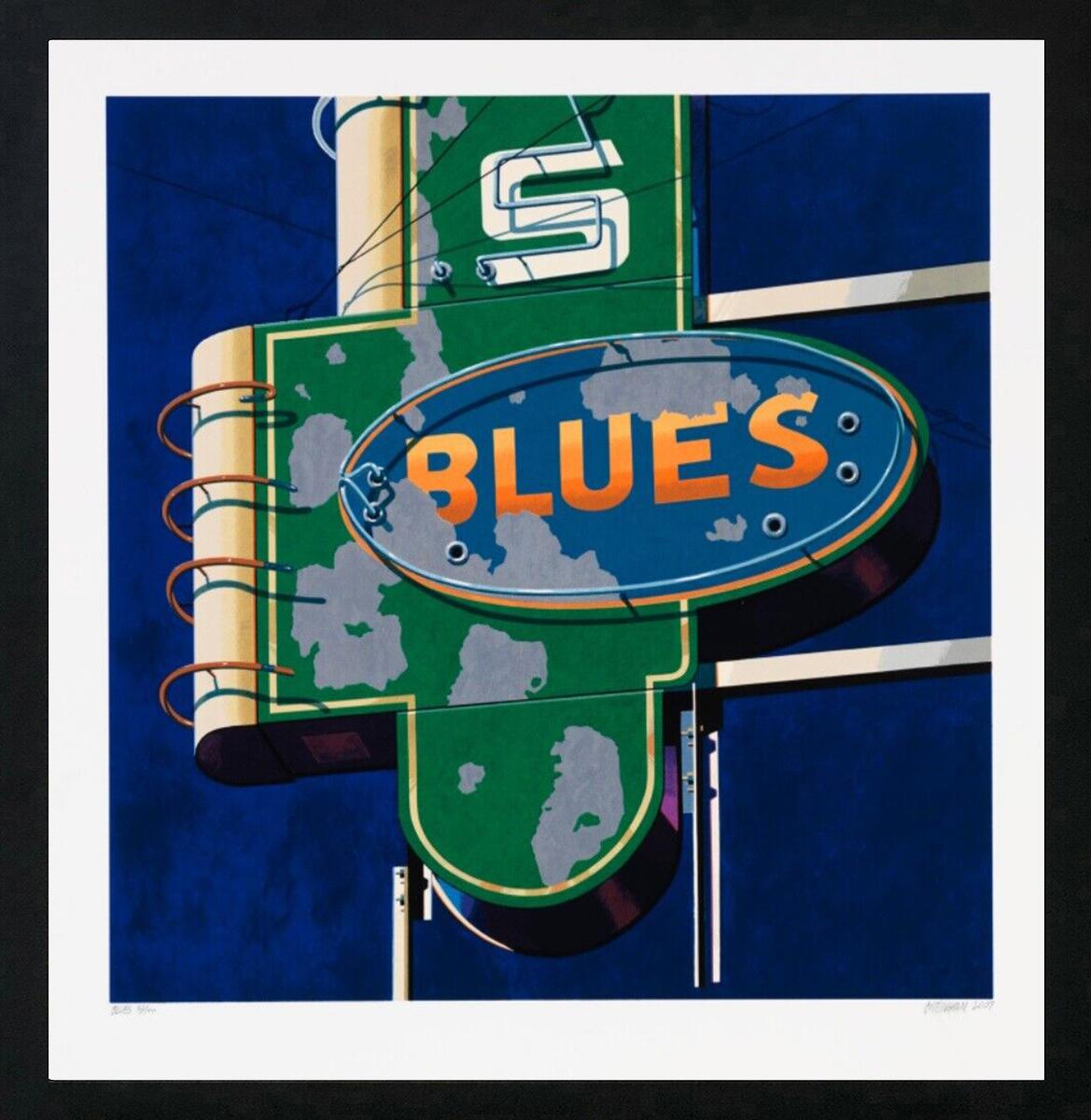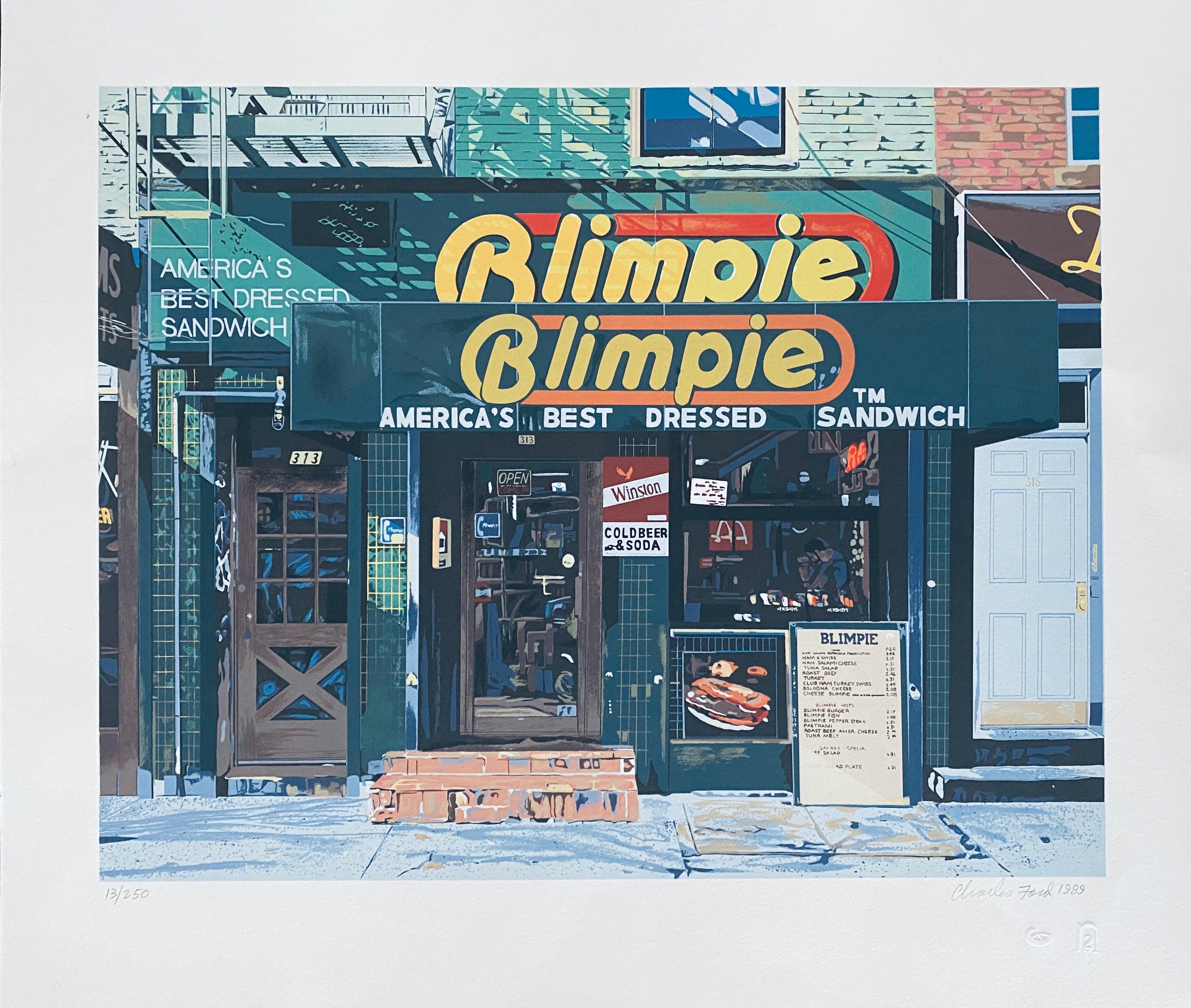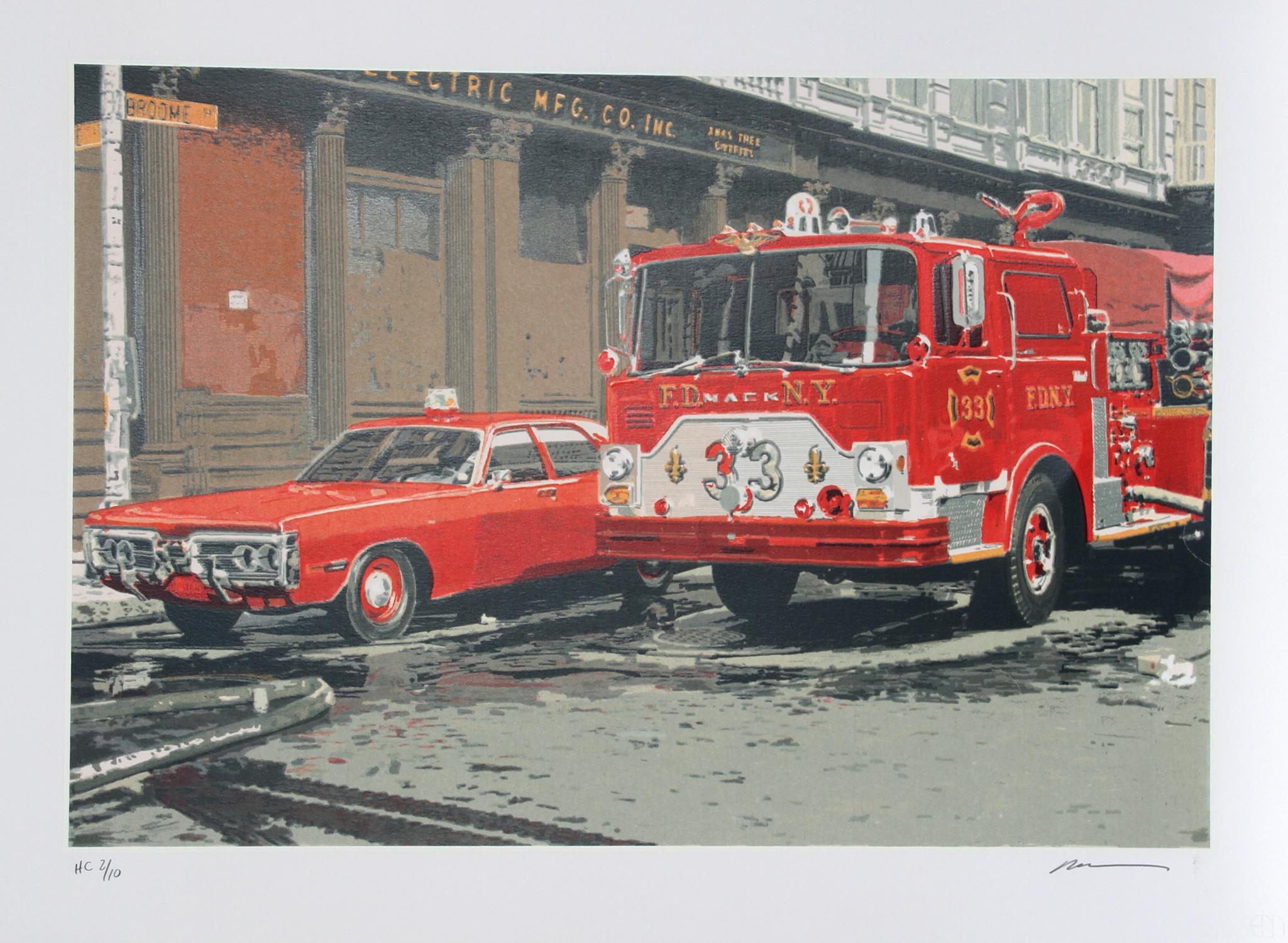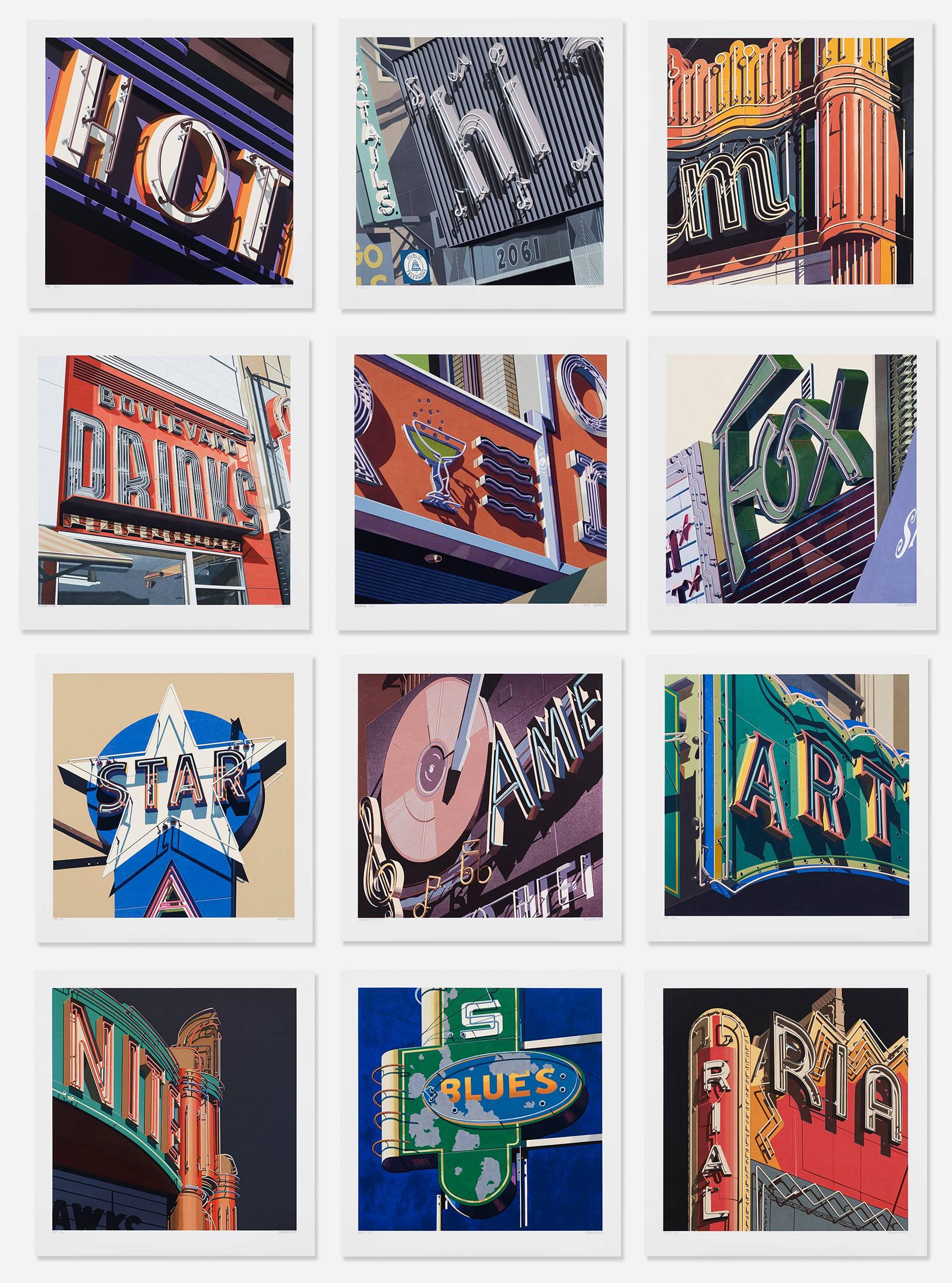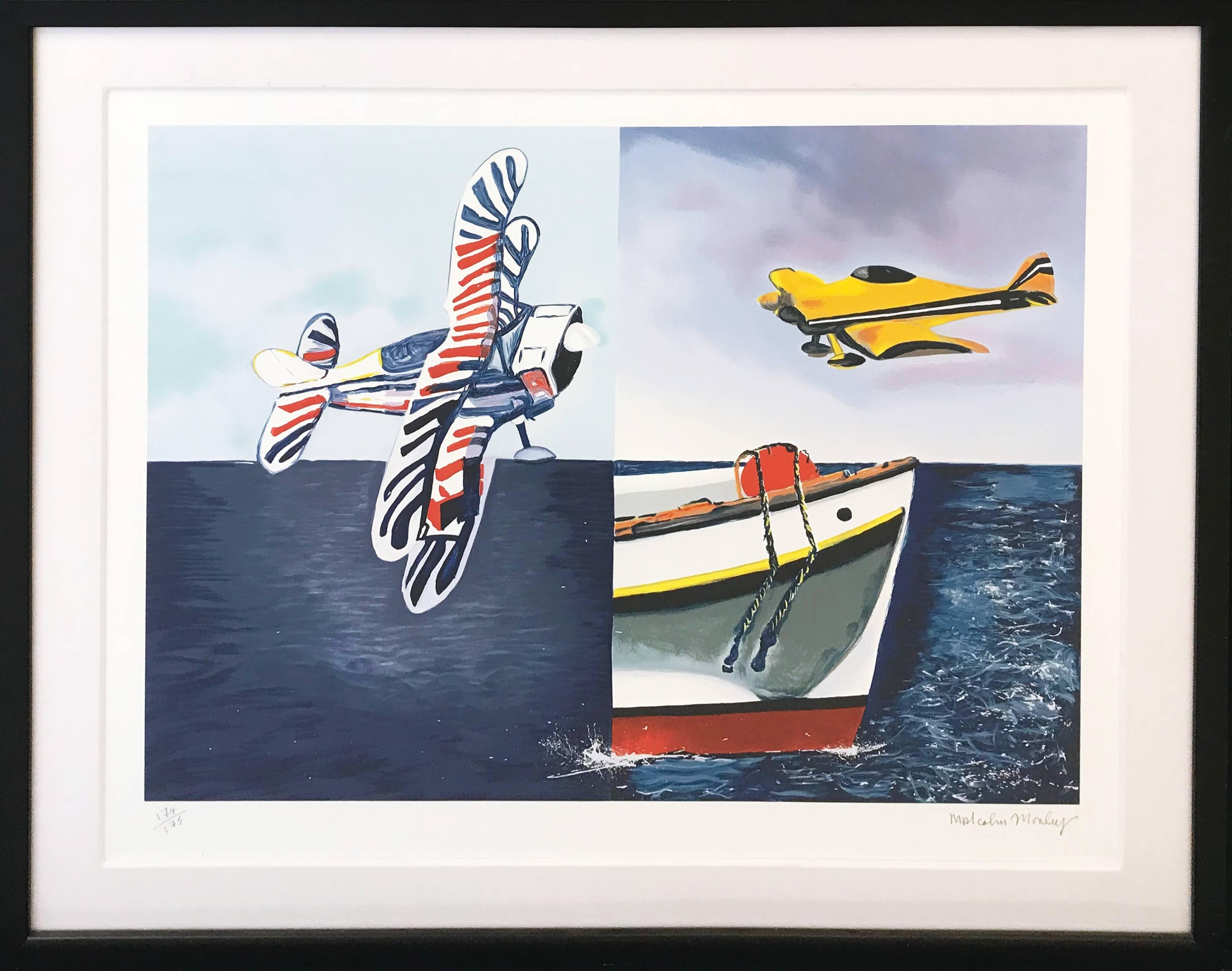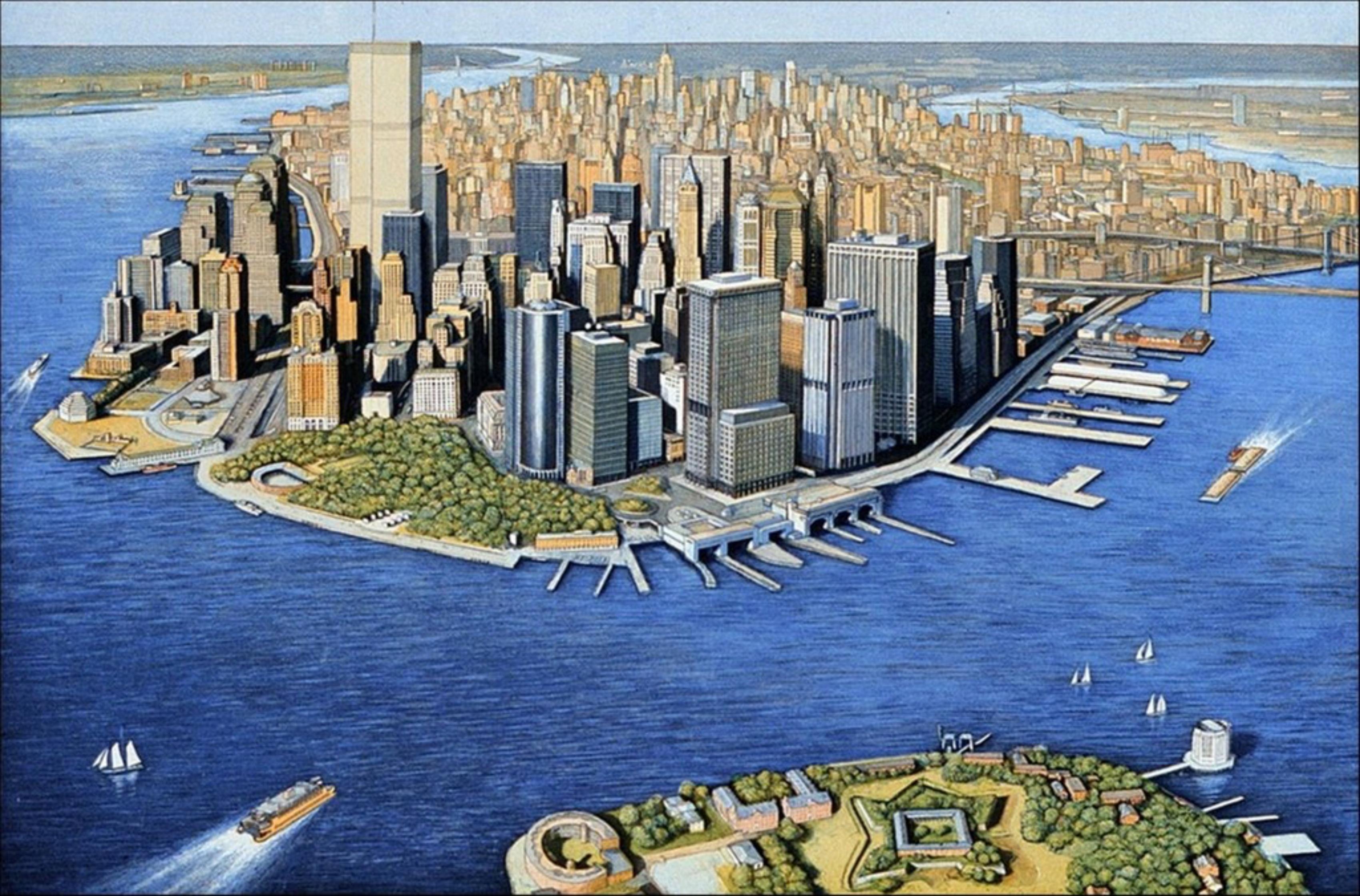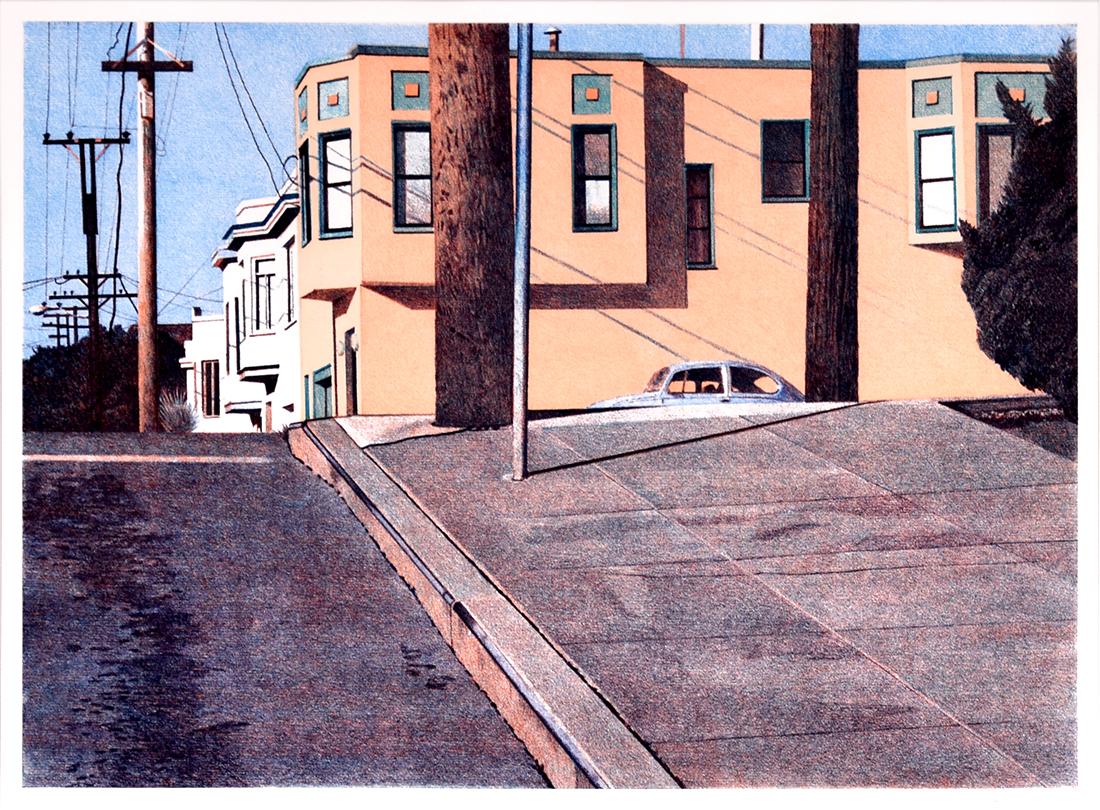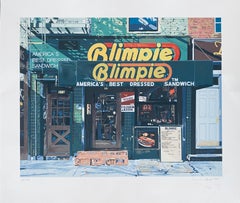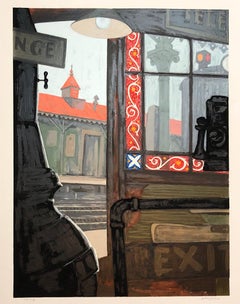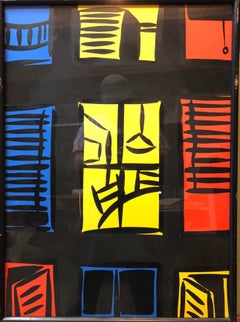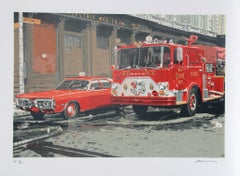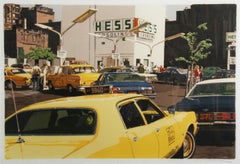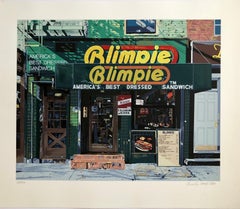
Blimpie, America's Best Dressed Sandwich Pop Art Photo Realist Silkscreen Litho
View Similar Items
Want more images or videos?
Request additional images or videos from the seller
1 of 8
Charles FordBlimpie, America's Best Dressed Sandwich Pop Art Photo Realist Silkscreen Litho1989
1989
About the Item
- Creator:Charles Ford (1941, American)
- Creation Year:1989
- Dimensions:Height: 22 in (55.88 cm)Width: 25.75 in (65.41 cm)
- Medium:
- Movement & Style:
- Period:
- Condition:minor wear.
- Gallery Location:Surfside, FL
- Reference Number:1stDibs: LU382116560
About the Seller
4.9
Platinum Seller
These expertly vetted sellers are 1stDibs' most experienced sellers and are rated highest by our customers.
Established in 1995
1stDibs seller since 2014
1,541 sales on 1stDibs
Typical response time: 1 hour
More From This SellerView All
- Blimpie, America's Best Dressed Sandwich Pop Art Photo Realist Silkscreen LithoBy Charles FordLocated in Surfside, FLCharles Ford, American Photo Realist Pop Artist Texas Artist Photorealism is a movement which began in the late 1960's, in which scenes are painted in a style closely resembling phot...Category
20th Century Photorealist Landscape Prints
MaterialsScreen
- Modernist Silkscreen Screenprint 'El Station, Interior' NYC Subway, WPA ArtistBy Anthony VelonisLocated in Surfside, FLscreenprint printed in color ink on wove paper. New York City subway station interior. Anthony Velonis (1911 – 1997) was an American painter and designer born in New York City who helped introduce the public to silkscreen printing in the early 20th century. While employed under the federal Works Progress Administration, WPA during the Great Depression, Velonis brought the use of silkscreen printing as a fine art form, referred to as the "serigraph," into the mainstream. By his own request, he was not publicly credited for coining the term. He experimented and mastered techniques to print on a wide variety of materials, such as glass, plastics, and metal, thereby expanding the field. In the mid to late 20th century, the silkscreen technique became popular among other artists such as Robert Rauschenberg and Andy Warhol. Velonis was born into a relatively poor background of a Greek immigrant family and grew up in the tenements of New York City. Early on, he took creative inspiration from figures in his life such as his grandfather, an immigrant from the mountains in Greece, who was "an ecclesiastical painter, on Byzantine style." Velonis attended James Monroe High School in The Bronx, where he took on minor artistic roles such as the illustration of his high school yearbook. He eventually received a scholarship to the NYU College of Fine Arts, into which he was both surprised and ecstatic to have been admitted. Around this time he took to painting, watercolor, and sculpture, as well as various other art forms, hoping to find a niche that fit. He attended NYU until 1929, when the Great Depression started in the United States after the stock market crash. Around the year 1932, Velonis became interested in silk screen, together with fellow artist Fritz Brosius, and decided to investigate the practice. Working in his brother's sign shop, Velonis was able to master the silkscreen process. He reminisced in an interview three decades later that doing so was "plenty of fun," and that a lot of technology can be discovered through hard work, more so if it is worked on "little by little." Velonis was hired by Mayor LaGuardia in 1934 to promote the work of New York's city government via posters publicizing city projects. One such project required him to go on a commercial fishing trip to locations including New Bedford and Nantucket for a fortnight, where he primarily took photographs and notes, and made sketches. Afterward, for a period of roughly six months, he was occupied with creating paintings from these records. During this trip, Velonis developed true respect and affinity for the fishermen with whom he traveled, "the relatively uneducated person," in his words. Following this, Velonis began work with the Public Works of Art Project (PWAP), an offshoot of the Civil Works Administration (CWA), where he was assigned to serve the different city departments of New York. After the formation of the federal Works Progress Administration, which hired artists and sponsored projects in the arts, he also worked in theater. Velonis began working for the federal WPA in 1935. He kept this position until 1936 or 1938, at which point he began working in the graphic art division of the Federal Art Project, which he ultimately led. Under various elements of the WPA program, many young artists, writers and actors gained employment that helped them survive during the Depression, as well as contributing works that created an artistic legacy for the country. When interviewed in December 1994 by the Library of Congress about his time in the WPA, Velonis reflected that he had greatly enjoyed that period, saying that he liked the "excitement" and "meeting all the other artists with different points of view." He also said in a later interview that "the contact and the dialogue with all those artists and the work that took place was just invaluable." Among the young artists he hired was Edmond Casarella, who later developed an innovative technique using layered cardboard for woodcuts. Velonis introduced silkscreen printing to the Poster Division of the WPA. As he recalled in a 1965 interview: "I suggested that the Poster division would be a lot more productive and useful if they had an auxiliary screen printing project that worked along with them. And apparently this was very favorably received..." As a member of the Federal Art Project, a subdivision of the WPA, Velonis later approached the Public Use of Arts Committee (PUAC) for help in "propagandizing for art in the parks, in the subways, et cetera." Since the Federal Art Project could not be "self-promoting," an outside organization was required to advertise their art more extensively. During his employment with the Federal Art Project, Velonis created nine silkscreen posters for the federal government. Around 1937-1939 Velonis wrote a pamphlet titled "Technical Problems of the Artist: Technique of the Silkscreen Process," which was distributed to art centers run by the WPA around the country. It was considered very influential in encouraging artists to try this relatively inexpensive technique and stimulated printmaking across the country. In 1939, Velonis founded the Creative Printmakers Group, along with three others, including Hyman Warsager. They printed both their own works and those of other artists in their facility. This was considered the most important silkscreen shop of the period. The next year, Velonis founded the National Serigraph Society. It started out with relatively small commercial projects, such as "rather fancy" Christmas cards that were sold to many of the upscale Fifth Avenue shops...Category
1980s American Modern Figurative Prints
MaterialsScreen
- New York Night, Vintage Large Modernist Pop Art SllkscreenBy Tom SlaughterLocated in Surfside, FL5-color silkscreen on 2-ply museum board. edition of 60 hand signed and numbered. American, 1955-2014 Born in 1955, Tom Slaughter’s career began in 1983 with his first exhibition at the Drawing Center in New York City. Since, he has had more than 20 solo shows in cities including San Francisco, Miami, London, Vancouver, Cologne and Fukuoka, Japan. Slaughter had worked extensively with master printer, Jean Russell at Durham Press, creating numerous limited edition prints using his signature bold primary colors. He worked as a printmaker in collaboration with Durham Press for 25 years, and his editions are included in the permanent collections of MoMA and the Whitney Museum of American Art. He illustrated twelve children’s books, including “Boat Works,” “Do You Know Which Ones will Grow? ” – a 2011 Notable American Library Association book of the year – and collaborations with Marthe Jocelyn such as “ABC x 3,” “Same Same,” and “123.” These books have been translated into six languages. Slaughter also worked for the last ten seasons as the Art Director for the New Victory Theater. As a designer, he created everything from t-shirts to skateboard decks, beach towels as well as a line of wallpaper for Cavern Home. Tom Slaughter, an artist, designer, and illustrator, passed away on October 24, 2014. In his Pop-inflected prints, drawings, illustrations, paintings, and design work Tom Slaughter exudes a love of life. He makes few distinctions between his various artistic endeavors; “I paint, draw, cut paper, use a computer, and even an iPhone—it’s all the same hand,” he says. In a 2001 print...Category
1990s Pop Art Figurative Prints
MaterialsScreen
- Israeli Naive Art Screen Print Lithograph Jerusalem, Sanhedrin Old City Folk ArtBy Gabriel CohenLocated in Surfside, FLBold color lithograph, hand signed in pencil and numbered AP IX/X (artist’s proof 9/10), Jerusalem Print Workshop blind stamp lower right. On French Arches paper. Gabriel Cohen, Self taught, Naive painter was born in Paris in 1933, to parents from Jerusalem with a father who studied the kabbalah. Throughout World War II, the family hid from the Nazis in Paris. Images of Nazi soldiers appear in several of his paintings. In 1949, when Gabriel was 16, the family returned to Israel. They managed to save enough money to move back to the quarter where both parents were born: Ohel Moshe in Nachlaot. Gabriel served in the artillery corps and after the army, went back to live in his parents' house and earned a living polishing diamonds. The head of the polishing plant, who noticed his employee's artistic skill, allowed him to paint during work hours. He once asked Cohen if he could draw a tiger. Cohen drew him a tiger. And he did a lot of sculpting and painting on glass. He also loved to play the guitar, especially flamenco style. Critics say he is one of Israel's greatest naive-style painters. Along with Shalom of Safed, Kopel Gurwin and Natan Heber, He is renowned as one of Israel's greatest living naive-style folk art painters, recipient of the Jerusalem Prize for Art (1987), a permanent entry in encyclopedias of naive painting, who exhibited his work not only in Israel, but also in Paris, Venezuela, Denmark and Germany; the same Gabriel Cohen whose colorful , bold paintings were exhibited at the Jewish Museum in New York in 1987 alongside works by Marc Chagall; the same Gabriel Cohen about whom curator and art scholar Gideon Ofrat says, "There is no questioning his greatness." He has shown in Paris on the Rue de Rosiers in the Marais. His impressions of his journeys, mostly imaginary, yet some real, are expressed in Cohen's paintings. Huge, colorful canvases rich in precise detail and fantasy, in which he paints the Eiffel Tower and the Russian steppes or the vistas of Paris and the Tower of Babel "In my opinion, it's also because the Tower of Babel has some kind of phallic, erotic meaning, but also because of the internationalism, of the mixture and confusion of nations, which is an essential element in Gabi Cohen's work," says Gideon Ofrat. There is no superlative that has not been lavished on Cohen's work by art critics, since he began showing his paintings at age 40, All the art critics seemed to agree at once that Cohen is one of the greatest naive-style painters in Israel. Their counterparts abroad seconded this view. About a year and a half ago, Zadka organized a show for Cohen at the Jerusalem Artists' House. The Tel Aviv Museum bought a painting of Gabi's and so did the Israel Museum, and several artists bought his drawings. He is a great, great painter. There is no painter who is more of a symbolist and illustrative artist than he is. As a painter myself, I admire him." The Yom Kippur War in 1973 sparked an artistic breakthrough for Cohen; it was at that time that he began to sit on the sidewalk after his work as a diamond polisher and paint. Not long afterward, in early 1974, he did a painting he called "Moses on the Mountain." Ruth Debel, of the Debel Gallery in Ein Kerem, passed by and saw it on the street. She asked how much he wanted for it, and for the first time in his life, he realized that his work had financial value. His first show was at the Debel Gallery in 1974. The response was overwhelming. Cohen was immediately declared a genius. His paintings at the gallery were purchased and he continued to create new paintings. That same year, he was invited to take part in a group exhibition of naive artists at the Kunsthaus in Zurich, and a year later, his work was included in a traveling show of naive-style artists from Israel that was exhibited in Denmark and Germany. Soon after that he was invited to be part of group shows in Venezuela and at the Tel Aviv Museum. Cohen had four solo shows at the Debel Gallery. Awards And Prizes 1987 Jerusalem Prize for Painting and Sculpture 1999 Shoshana Ish-Shalom Prize for special contribution to art, Jerusalem He has exhibited alngside all of the Israeli great artists. including Naive Art Group exhibition Gvanim Art Gallery, Jerusalem Rubin, Rachel Roman, Yitzhak Zarembo, Leah Moscovitz, Shalom (of Safed) Steinberg, Michael Danisov, Salva Harbon, Haim Cohen, Gabriel Chanannia, Joseph (Jojo) Local Hero...Category
20th Century Folk Art Landscape Prints
MaterialsScreen, Lithograph
- Israeli Folk Art Hebrew Naive Judaica Lithograph Jewish Holiday ShavuotBy Shalom MoskovitzLocated in Surfside, FLVintage pencil signed and numbered limited edition lithograph on deckle edged Arches paper. Shalom of Sefad (Shulem der Zeigermacher in Yiddish Shalom Moskowitz) Shalom of Tzfat liv...Category
20th Century Folk Art Figurative Prints
MaterialsLithograph
- 1970 Silencio, Direccion Unica, One Way Spanish Political Etching Pop Art PrintBy Juan GenovesLocated in Surfside, FLJuan Genovés Candel (Spanish, 1930-) Painter, illustrator, and graphic printmaker engraver. He painted 'El abrazo' ('the embrace'), which became an emblematic poster during the Spanish political transition. He was born in Valencia in 1930. The son of Juan Genovés Cubells, an artisan whose family was close to the labor movement. His mother Maria Candel Muñoz came from a family of practicing Catholics. In 1946 Genovés studied at the Escuela de Bellas Artes de San Carlos in Valencia and then settled in Madrid. He set up the 'Los Siete' group together with other artists in 1949, and the following year he travelled to Madrid, where he was influenced by the works by Fra Angélico and Hieronymus Bosch in the Prado Museum. In 1957 he had his first solo exhibitions in the gallery Alfil, Madrid and in the Museo d'Arte Moderna, Havana. He is considered the most important representative of modern Spanish painting. His images, executed in a politically engaged, critical realism...Category
1970s Pop Art Figurative Prints
MaterialsLithograph
You May Also Like
- Fire Engine, FNDY, Photorealist Silkscreen by Ron KleemannBy Ron KleemannLocated in Long Island City, NYArtist: Ron Kleemann, American (1937 - ) Title: Fire Engine (FDNY) Year: 1979 Medium: Serigraph on Somerset Paper, signed and numbered in pencil Editio...Category
1970s Photorealist Landscape Prints
MaterialsScreen
- Gas Line, Photorealist Silkscreen by Ron KleemannBy Ron KleemannLocated in Long Island City, NYArtist: Ron Kleemann, American (1937 - ) Title: Gas Line from the CityScapes Portfolio Year: 1981 Medium: Serigraph on Somerset Paper, signed and number...Category
1970s Photorealist Landscape Prints
MaterialsScreen
- AMERICAN SIGNS (PORTFOLIO OF 12)By Robert CottinghamLocated in Aventura, FLEach hand signed, titled, numbered and dated, lower margin. Screen print in colors on wove paper with full margins. Each sheet size: 38 x 37. Each image size: 32 x 32. Certificate of Authenticity included. Complete Suite, edition 69/100. Published by Greg Smith...Category
Early 2000s Photorealist Landscape Prints
MaterialsPaper, Screen
$26,250 Sale Price25% Off - QUARTETBy Malcolm MorleyLocated in Aventura, FLHand signed and numbered by the artist. Silkscreen on Arches paper. Framed size approx 38 x 45 inches. Image size 30 x 40 inches. Artwork is in excellent condition. Certificate of Au...Category
Early 2000s Photorealist Landscape Prints
MaterialsPaper, Screen
$2,250 Sale Price25% Off - BATTLE OF BRITAINBy Malcolm MorleyLocated in Aventura, FLHand signed and numbered by the artist. Silkscreen on Arches paper. Image size 30 x 30 inches. Artwork is in excellent condition. Certificate of Authenticity included. Published by C...Category
Early 2000s Photorealist Landscape Prints
MaterialsScreen, Paper
- NITEBy Robert CottinghamLocated in Aventura, FLHand signed, titled, numbered and dated, lower margin. Screen print in colors on wove paper with full margins. Sheet size: 38 x 37 inches. Image size: 32 x 32 inches. Frame size approx 41 x 40 inches. Edition of 100. From American Signs portfolio. Certificate of Authenticity included. Published by Greg Smith...Category
Early 2000s Photorealist Landscape Prints
MaterialsScreen, Paper
$2,775 Sale Price25% Off
